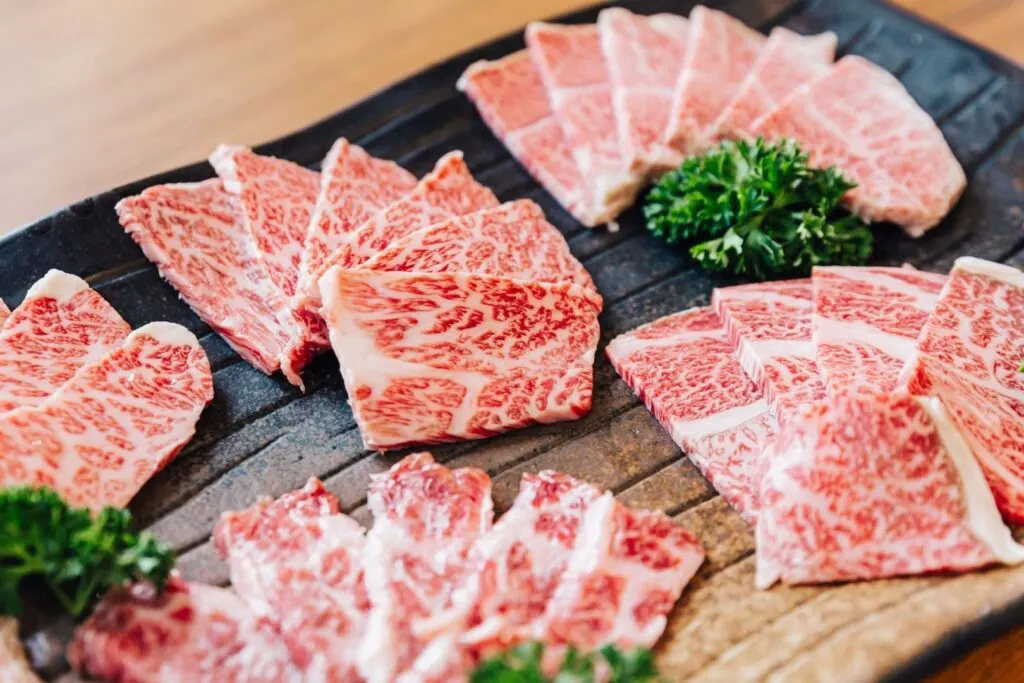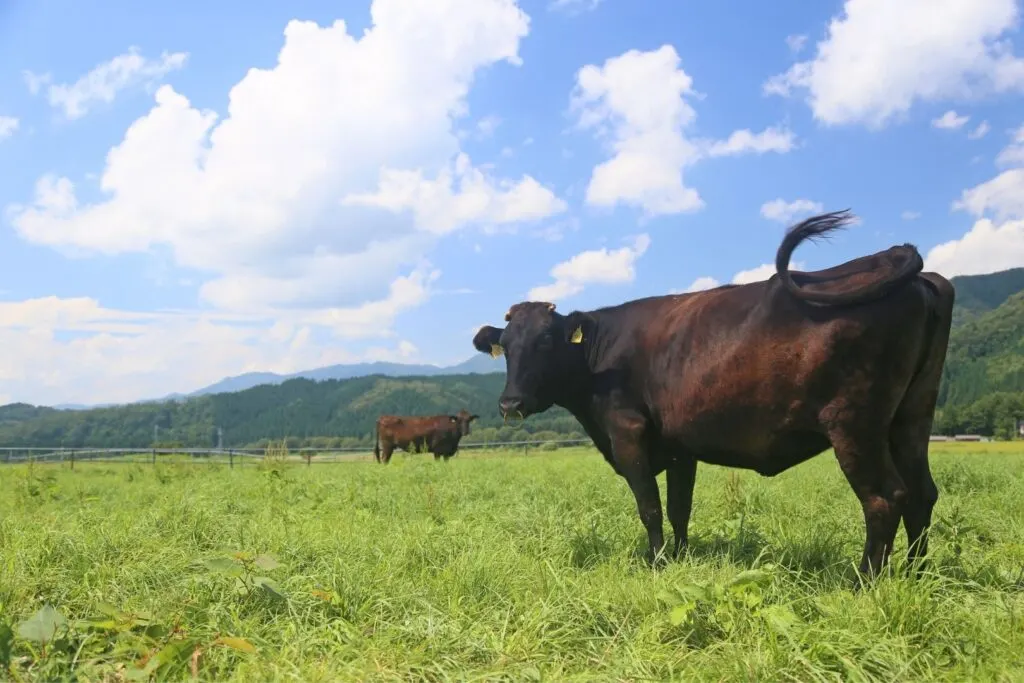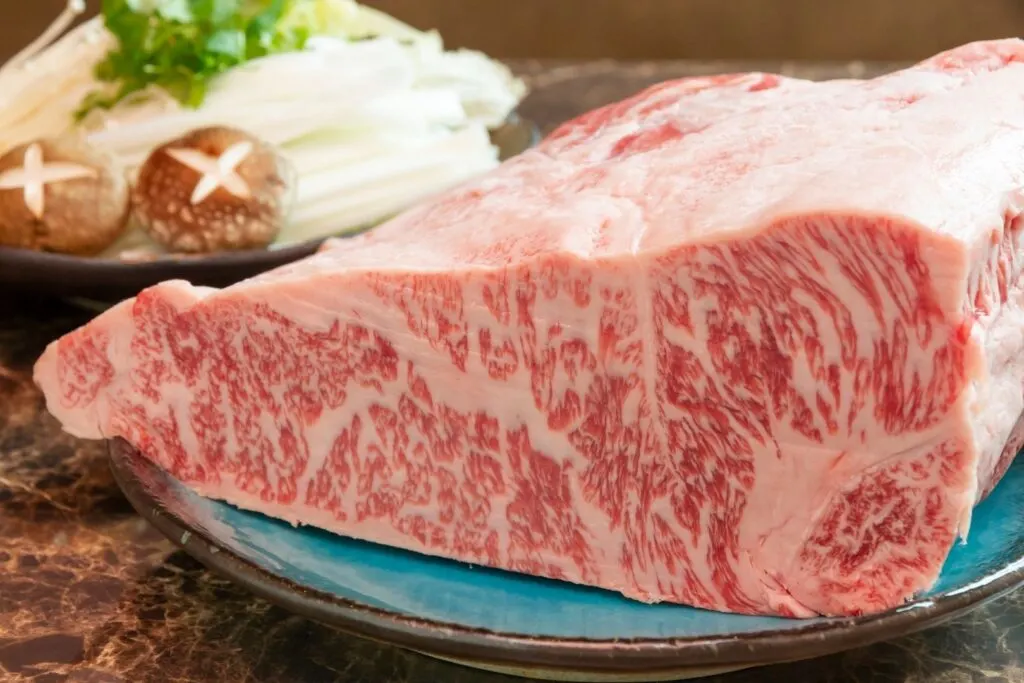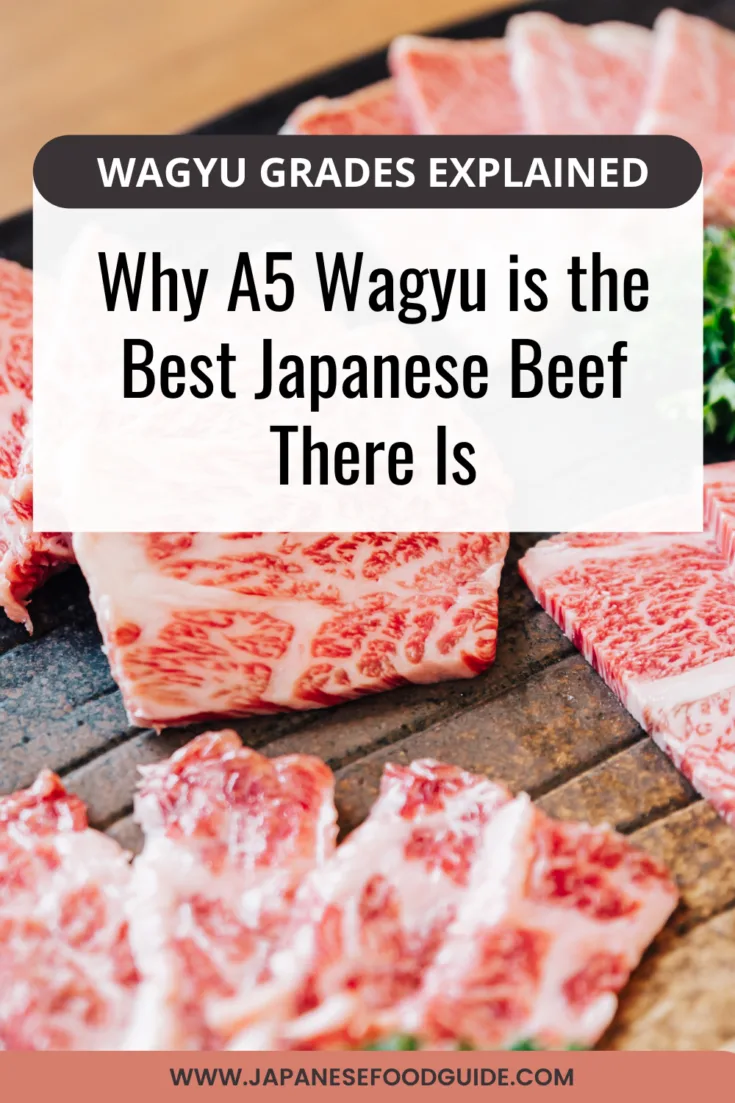If you like meat, you’ve no doubt heard of wagyu, the delectable Japanese beef with high levels of marbling that causes the beef to almost melt in your mouth.
Most people know the term, but just what is wagyu beef, what are the wagyu grades and what is A5 wagyu?
We’ll break down what you need to know, so the next time you have the opportunity to try Japanese beef, you’ll know exactly what you’re getting.

Table of Contents
What is wagyu?
Wagyu (和牛, わぎゅう) literally means Japanese cow or cattle (wa meaning Japanese and gyū meaning cow). It is a term that is used to refer to meat from Japanese breeds that produce wagyu.
Wagyu cattle are classified into four breeds – Japanese Black, Japanese Brown, Japanese Poll, and Japanese Shorthorn. Despite common misconception, wagyu is not a breed itself, nor is all wagyu top quality.
The vast majority, around 90%, of wagyu in Japan, however, comes from the Japanese Black breed, which is known for its superior marbling, the thin strips or flecks of fat that give the melt-in-your-mouth experience that Japanese wagyu is so renowned for, making even poorer quality graded beef a culinary delight by most world standards.
So just how is wagyu graded?

Wagyu grades
The wagyu grade system uses a combination of letters and numbers and is used to rate the quality of Japanese beef. Information on the grades of wagyu being served should be either available on the menu or by asking the server or chef.
Wagyu is given a letter grade (A through C) for yield and a number grade (1 through 5) for quality.
Quality scores are taken extremely seriously and are done by no less than three independent highly-trained assessors, whose scores are combined to establish a final grade.
Here’s what you need to know about wagyu grading.
Yield grade
Yield grade determines the ‘cutability’ of the meat, meaning the proportion of meat that can be obtained from a certain part of the cow’s carcass.
Yield is assigned a letter grade.
Grade A : Above standard
Grade B : Standard
Grade C : Below standard
Quality grade
Wagyu beef quality is determined by evaluating four different categories:
- the thin strips or flecks of fat known as marbling;
- the color and brightness of the beef;
- firmness and texture;
- and the color, luster and quality of the fat.
The beef is assigned a number grade from 1-5 for each of the categories.
5: Excellent
4: Good
3: Average
2: Below average
1: Poor
Therefore, taking the best score from each category, the best wagyu grade that can be obtained is A5.
Japanese beef must grade at the same level across all quality criteria to be given that status. For example, beef that is assessed as A for yield and 5 across three of the four quality measurements, and 4 for one, can only be given a score of A4. Therefore, you can be guaranteed that anything rated as A5 wagyu is of extremely high quality in all areas.

What’s better than A5 wagyu?
A5 wagyu may be the highest wagyu grade, but there’s one extra area of grading that separates the best from the absolute mind-blowing.
Within the marbling category, there is additional grading based on the Beef Marble Score (BMS). The BMS allows the distinct marbling of the beef to be graded to an even finer degree of accuracy, and is given a number grade of 1-12.
This shows just how important marbling, known as ‘sashi‘ in Japanese, is to the quality of wagyu and the overall experience of eating high-quality Japanese beef.
The grading of wagyu marbling is as follows:
Grade BMS No.
5: Excellent 8 – 12
4: Good 5 – 7
3: Average 3 – 4
2: Below average 2
1: Poor 1
Therefore once BMS is factored in, the actual highest grade of wagyu is A5-12, which is extremely rare.
According to author of ‘Real Food, Fake Food’ and US food journalist Larry Olmstead, “USDA Prime, our highest marbling grade, equates to about 4 (on the BMS scale). Most domestic Wagyu or hybrids would score 6-9, while Kobe usually ranks 10 or higher.”
Wagyu outside of Japan
While wagyu means pure-bred wagyu in Japan, the term unfortunately doesn’t always mean the same thing abroad.
While a very small number of pure-bred Japanese cattle do exist in the US, meat need only be 46.9% Japanese to be labeled wagyu. Typically wagyu in the United States is cross-bred with Angus cattle and may be more Angus beef than wagyu.
However, even this very broad definition of wagyu only applies to farmers and abattoirs; it does not extend to restaurants. So essentially restaurants can sell any beef as wagyu and many do.
Eating wagyu in Japan versus America, for example, or Australia, where wagyu breeds are usually cross-bred with domestic Angus cattle as well, is a different experience, not only because of pure-bred versus cross-bred cattle; the climate, environment, rearing techniques and the feed the animals consume all impact texture, taste and marbling.
The strict grading system described above only applies to wagyu in Japan and the vast majority of it remains in-country for domestic consumption. Wagyu reared in Japan reaches such a high quality that the American and Australian grading systems don’t have categories for such extensive marbling.
The USDA only recognizes beef up to ‘Prime,’ which equates to about 4 on the BMS scale (considered ‘average’ in Japan) and Australia’s own AUS-MEAT marbling system only goes up to an equivalent of BMS 9 (9+ is the maximum and is designated to anything that is considered above a 9).
Have you ever tried A5 wagyu or any other grades of Japanese beef? Where did you try it and what did you think of it?
Want to have an outdoor BBQ where all you have to do is show up and enjoy grilling? Food and drinks provided, cleaning of the grill done for you, a nice spot prepared to sit and enjoy time with family and friends? Read about the ‘Tebura BBQ’ service here!
Pin me for later

Jessica Korteman is a seasoned travel writer from Melbourne, Australia. She has spent a decade living, working and traveling in Japan, and specializes in Japanese culture, festivals and events, and travel destinations both on and off the beaten path throughout the country.
She is the Founder and Editor of Japanese Food Guide.
